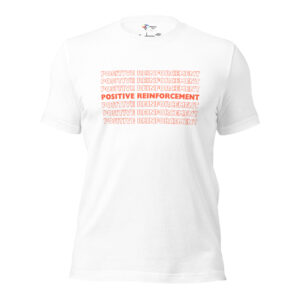Chaining
Table of Contents
Welcome back to our RBT Competency Assessment blog post series! This post will cover various aspects of task number eight: chaining. In this series, we are exploring each task on the RBT Competency Assessment to help new Behavior Technicians (BTs) prepare for their initial competency assessments and provide a valuable refresher for Registered Behavior Technicians (RBTs) renewing their certification.
Chaining is a fundamental teaching strategy in the field of Applied Behavior Analysis (ABA) that involves breaking down complex behaviors into smaller, manageable steps. By teaching these steps sequentially, learners can acquire and master complex skills that are essential for daily living and independence. Chaining is particularly effective for teaching behaviors that require a specific sequence of actions, such as self-care tasks, academic skills, and vocational activities.
In this blog post, we will cover what chaining is, why it is important, and how it is used in ABA. We will explore the various forms of chaining, including forward chaining, backward chaining, and total task chaining, and provide detailed examples of each using the task of washing hands. By mastering these chaining techniques, RBTs can significantly enhance their ability to teach complex behaviors and promote greater independence in their clients. Let’s begin by defining chaining and discussing its role and significance in ABA.
What is Chaining?
Definition and Explanation:
Chaining is a teaching technique used in Applied Behavior Analysis (ABA) that involves breaking down a complex behavior into smaller, sequential steps. Each step serves as a cue for the next step, creating a “chain” of behaviors that, when linked together, result in the completion of a complex task. This method is particularly useful for teaching multi-step skills that individuals with autism or other developmental disabilities may find challenging to learn all at once.
Role in ABA:
In ABA, chaining plays a crucial role in skill acquisition. It provides a structured way to teach complex behaviors by focusing on one step at a time. This incremental approach helps learners master each component of the behavior before moving on to the next, ensuring a thorough understanding and greater likelihood of success. Chaining is commonly used to teach daily living skills, academic tasks, and social behaviors.
Types of Chaining:
- Forward Chaining: Teaching the steps of the task in their naturally occurring order, starting with the first step.
- Backward Chaining: Teaching the steps of the task in reverse order, starting with the last step.
- Total Task Chaining: Teaching all steps of the task simultaneously, providing prompts and support as needed.

Why is Chaining Important?
Benefits of Using Chaining Techniques:
- Promotes Independence: By breaking down complex tasks into manageable steps, chaining helps learners gain independence in performing daily living skills, such as dressing, grooming, and cooking.
- Increases Self-Confidence: Mastering each step of a task builds the learner’s confidence and motivation, leading to a sense of accomplishment and readiness to tackle more complex behaviors.
- Facilitates Learning of Complex Behaviors: Chaining provides a clear and systematic way to teach multi-step behaviors that might otherwise be overwhelming for learners.
How Chaining Aids in Learning and Behavior Change:
- Step-by-Step Mastery: Learners focus on one step at a time, allowing them to build proficiency before moving on to the next step.
- Reinforcement of Successive Steps: Each step in the chain is reinforced, encouraging the learner to continue progressing through the task.
- Consistency and Predictability: Chaining provides a consistent and predictable structure for learning, which can be especially beneficial for individuals who thrive on routine and order.
Impact on Client Progress and Independence:
Chaining techniques lead to significant improvements in the learner’s ability to perform complex tasks independently. By mastering each step of a behavior, learners develop the skills and confidence needed to complete the entire task on their own. This increased independence enhances the learner’s quality of life and reduces their reliance on caregivers for daily activities. Additionally, the skills learned through chaining can be generalized to other contexts and tasks, further promoting autonomy and self-sufficiency.
Types of Chaining
Chaining techniques in Applied Behavior Analysis (ABA) include forward chaining, backward chaining, and total task chaining. Each method is used to teach complex behaviors by breaking them down into smaller, more manageable steps. Let’s explore each type of chaining and provide detailed examples using the task of washing hands.
Forward Chaining
Definition and Explanation:
Forward chaining involves teaching the steps of a task in their naturally occurring order, starting with the first step. Each step is taught and mastered before moving on to the next. The learner completes each new step independently while receiving support and reinforcement for the steps they have already mastered.
Example of Forward Chaining Using Washing Hands:
In this example, our learner has already mastered the first two steps of the hand-washing task: turning on the faucet and wetting their hands with water. The learner is now ready to move on to the third step, applying soap to their hands. The third step will be taught using most-to-least prompting techniques until the learner masters it, while the remaining steps will be fully prompted according to the learner’s skill level.
Mastered Skills:
Step 1: Turn on the faucet.
- Learner’s Skill Level: The learner has already mastered this step and can perform it independently.
Step 2: Wet hands with water.
- Learner’s Skill Level: The learner has also mastered this step and can perform it independently.
Teaching Step 3:
Step 3: Apply soap to hands.
- Antecedent: The therapist prompts the learner to apply soap to their hands.
- Prompting: The therapist uses most-to-least prompting, starting with a physical prompt (hand-over-hand assistance) if needed, and fading to a fully faded prompt to achieve mastery.
- Response: The learner applies soap to their hands.
- Consequence: The therapist provides immediate reinforcement, “Great job applying the soap!”
Prompting Remaining Steps at Learner’s Skill Level:
Step 4: Scrub hands together.
- Antecedent: The therapist instructs the learner to scrub their hands.
- Prompting: The therapist provides the level of prompting required for the learner to perform the step, whether it be physical, gestural, or verbal.
- Response: The learner scrubs their hands.
Step 5: Rinse hands under water.
- Antecedent: The therapist instructs the learner to rinse their hands.
- Prompting: The therapist provides the level of prompting required for the learner to perform the step, whether it be physical, gestural, or verbal.
- Response: The learner rinses their hands.
Step 6: Turn off the faucet.
- Antecedent: The therapist instructs the learner to turn off the faucet.
- Prompting: The therapist provides the level of prompting required for the learner to perform the step, whether it be physical, gestural, or verbal.
- Response: The learner turns off the faucet.
Step 7: Dry hands with a towel.
- Antecedent: The therapist instructs the learner to dry their hands.
- Prompting: The therapist provides the level of prompting required for the learner to perform the step, whether it be physical, gestural, or verbal.
- Response: The learner dries their hands.
By following these steps and using most-to-least prompting for the step being taught while fully prompting the other steps according to the learner’s skill level, the therapist ensures that the learner is gradually gaining independence in each step of the task. Once the learner masters applying soap to their hands, they will move on to mastering the next step in the sequence, continuing until the entire task can be performed independently.
Backward Chaining
Definition and Explanation:
Backward chaining involves teaching the steps of a task in reverse order, starting with the last step. It does not mean performing the steps backward but rather that the therapist completes all the steps except the last one, which the learner performs independently. Once the learner masters the final step, they learn the second-to-last step, and so on, until they can perform the entire task independently. This method helps the learner experience success immediately, as they always complete the final step of the task.
Example of Backward Chaining Using Washing Hands:
In this example, our learner has already mastered the final step of the hand-washing task: drying their hands with a towel. The learner is now ready to move on to the second-to-last step, turning off the faucet. Steps 1-5 will be fully prompted according to the learner’s skill level.
Prompting Remaining Steps at Learner’s Skill Level:
Step 1: Turn on the faucet.
- Antecedent: The therapist instructs the learner to turn on the faucet.
- Prompting: The therapist provides the level of prompting required for the learner to perform the step, whether it be physical, gestural, or verbal.
- Response: The learner turns on the faucet.
Step 2: Wet hands with water.
- Antecedent: The therapist instructs the learner to wet their hands.
- Prompting: The therapist provides the level of prompting required for the learner to perform the step, whether it be physical, gestural, or verbal.
- Response: The learner wets their hands.
Step 3: Apply soap to hands.
- Antecedent: The therapist instructs the learner to apply soap to their hands.
- Prompting: The therapist provides the level of prompting required for the learner to perform the step, whether it be physical, gestural, or verbal.
- Response: The learner applies soap to their hands.
Step 4: Scrub hands together.
- Antecedent: The therapist instructs the learner to scrub their hands.
- Prompting: The therapist provides the level of prompting required for the learner to perform the step, whether it be physical, gestural, or verbal.
- Response: The learner scrubs their hands.
Step 5: Rinse hands under water.
- Antecedent: The therapist instructs the learner to rinse their hands.
- Prompting: The therapist provides the level of prompting required for the learner to perform the step, whether it be physical, gestural, or verbal.
- Response: The learner rinses their hands.
Teaching Step 6:
Step 6: Turn off the faucet.
- Antecedent: The therapist prompts the learner to turn off the faucet.
- Prompting: The therapist uses most-to-least prompting, starting with a physical prompt (hand-over-hand assistance) if needed, and fading to a fully faded prompt to achieve mastery.
- Response: The learner turns off the faucet.
- Consequence: The therapist provides immediate reinforcement, “Great job turning off the faucet!”
Mastered Skill:
- Step 7: Dry hands with a towel.
- Learner’s Skill Level: The learner has already mastered this step and can perform it independently.
By following these steps and using most-to-least prompting for the step being taught while fully prompting the other steps according to the learner’s skill level, the therapist ensures that the learner is gradually gaining independence in each step of the task. Once the learner masters turning off the faucet, they will move on to mastering the previous step in the sequence, continuing until the entire task can be performed independently.
Total Task Chaining
Definition and Explanation:
Total task chaining involves teaching all the steps of a task simultaneously. The learner is guided through the entire sequence from start to finish, with prompts and support provided as needed for each step. This method is useful for learners who can perform multiple steps and need assistance in linking them together.
Example of Total Task Chaining Using Washing Hands:
In this example, the learner will be guided through the entire sequence of washing hands, from turning on the faucet to drying their hands. Each step will be prompted according to the learner’s skill level, and the learner will receive reinforcement after completing the entire task.
Prompting Steps at Learner’s Skill Level:
Step 1: Turn on the faucet.
- Antecedent: The therapist instructs the learner to turn on the faucet.
- Prompting: The therapist provides the level of prompting required for the learner to perform the step, whether it be physical, gestural, or verbal.
- Response: The learner turns on the faucet.
Step 2: Wet hands with water.
- Antecedent: The therapist instructs the learner to wet their hands.
- Prompting: The therapist provides the level of prompting required for the learner to perform the step, whether it be physical, gestural, or verbal.
- Response: The learner wets their hands.
Step 3: Apply soap to hands.
- Antecedent: The therapist instructs the learner to apply soap to their hands.
- Prompting: The therapist provides the level of prompting required for the learner to perform the step, whether it be physical, gestural, or verbal.
- Response: The learner applies soap to their hands.
Step 4: Scrub hands together.
- Antecedent: The therapist instructs the learner to scrub their hands.
- Prompting: The therapist provides the level of prompting required for the learner to perform the step, whether it be physical, gestural, or verbal.
- Response: The learner scrubs their hands.
Step 5: Rinse hands under water.
- Antecedent: The therapist instructs the learner to rinse their hands.
- Prompting: The therapist provides the level of prompting required for the learner to perform the step, whether it be physical, gestural, or verbal.
- Response: The learner rinses their hands.
Step 6: Turn off the faucet.
- Antecedent: The therapist instructs the learner to turn off the faucet.
- Prompting: The therapist provides the level of prompting required for the learner to perform the step, whether it be physical, gestural, or verbal.
- Response: The learner turns off the faucet.
Step 7: Dry hands with a towel.
- Antecedent: The therapist instructs the learner to dry their hands.
- Prompting: The therapist provides the level of prompting required for the learner to perform the step, whether it be physical, gestural, or verbal.
- Response: The learner dries their hands.
By following these steps and using the appropriate level of prompting for each step, the therapist ensures that the learner is gaining proficiency in performing the entire task. Total task chaining allows the learner to practice the entire sequence of actions in one go, which can help in mastering the overall task more efficiently.
When to Use Each Chaining Technique
In Applied Behavior Analysis (ABA), different chaining techniques are used based on the learner’s needs, the complexity of the task, and the learning environment. While the ultimate decision on which chaining technique to use should be guided by the instructions of your Board Certified Behavior Analyst (BCBA), here are some reasons why a BCBA might choose each chaining technique and the benefits of each approach.
Forward Chaining
When to Use Forward Chaining:
- Learners Who Struggle with Task Initiation: Forward chaining is particularly useful for learners who have difficulty starting tasks. By beginning with the first step and moving forward, learners build a routine of starting the task correctly.
- Tasks with Clear Sequential Order: Forward chaining is beneficial for tasks that have a clear and logical sequence, making it easier for learners to understand the order of steps.
- Building Early Success: This method helps learners experience success from the beginning by mastering the initial steps, which can boost confidence and motivation.
Benefits:
- Provides a clear starting point for learners.
- Allows for systematic reinforcement of each step.
- Builds momentum as the learner progresses through the task.
Backward Chaining
When to Use Backward Chaining:
- Tasks Where the Final Step is Rewarding: Backward chaining is ideal for tasks where the final step is intrinsically rewarding or critical, such as completing a puzzle or finishing a meal preparation.
- Learners Who Need Immediate Success: This method is beneficial for learners who need immediate success and reinforcement. Completing the final step first ensures they always finish the task on a positive note.
- Complex Tasks: Backward chaining is effective for complex tasks where the final steps are easier to master and can be used to build confidence before tackling earlier, more challenging steps.
Benefits:
- Ensures the learner always finishes the task successfully.
- Reinforces the final, often most rewarding, part of the task.
- Helps learners understand the outcome of their actions from the start.
Total Task Chaining
When to Use Total Task Chaining:
- Learners Who Can Perform Multiple Steps: Total task chaining is suitable for learners who have the ability to perform multiple steps of the task with varying levels of assistance.
- Tasks with Simple Steps: This method works well for tasks where each step is relatively simple, and the learner can handle the entire sequence with support.
- Comprehensive Skill Development: Total task chaining is ideal when the goal is to practice and master the entire task in one go, providing a holistic approach to learning.
Benefits:
- Allows practice of the entire task sequence.
- Provides a comprehensive understanding of the task.
- Encourages independence by linking all steps together.
Choosing the Right Technique:
Selecting the appropriate chaining technique depends on the learner’s individual needs, the nature of the task, and the specific learning objectives. ABA practitioners should consider the learner’s strengths and areas for improvement, the complexity of the task, and the desired outcomes when choosing between forward chaining, backward chaining, and total task chaining. Ultimately, follow the guidance and instructions provided by your BCBA, as they will make recommendations based on their professional assessment and the learner’s unique requirements.
FAQ on Chaining Techniques in ABA
The following FAQ section consists of the four most Googled questions on the topic of chaining techniques.
- Q: What is an example of a chaining technique?
- A: An example of a chaining technique is teaching a child to brush their teeth using forward chaining. The process is broken down into smaller steps such as getting the toothbrush, applying toothpaste, brushing the top teeth, brushing the bottom teeth, rinsing the mouth, and putting the toothbrush away. The child first learns to get the toothbrush, with the remaining steps being fully prompted. Once the child masters the first step, they move on to learning the second step, while the rest are still prompted.
- Q: What are the three types of chaining procedures?
- A: The three types of chaining procedures are:
- Forward Chaining: Teaching the steps of a task in their naturally occurring order, starting with the first step.
- Backward Chaining: Teaching the steps of a task in reverse order, starting with the last step.
- Total Task Chaining: Teaching all steps of the task simultaneously, with the learner receiving support and prompts as needed for each step.
- A: The three types of chaining procedures are:
- Q: What is the chain method in psychology?
- A: The chain method in psychology, also known as behavioral chaining, involves breaking down a complex behavior into smaller, more manageable steps. Each step acts as a cue for the next, forming a chain of behaviors that lead to the completion of a task. This method is used to teach complex skills by reinforcing each step in the sequence, making it easier for individuals to learn and perform the entire behavior.
- Q: How to use chaining in ABA?
- A: To use chaining in ABA:
- Identify the Task: Break down the complex task into smaller, sequential steps.
- Choose the Chaining Technique: Decide whether to use forward chaining, backward chaining, or total task chaining based on the learner’s needs and the task complexity.
- Teach Each Step: Use appropriate prompting and reinforcement techniques to teach each step in the sequence.
- Reinforce Success: Provide immediate and appropriate reinforcement after the learner completes each step or the entire task, depending on the chosen chaining method.
- Monitor and Adjust: Continuously monitor the learner’s progress and adjust the level of prompting and support as needed to promote independence and mastery of the task.
- A: To use chaining in ABA:
Final Thoughts
Chaining techniques are essential tools in Applied Behavior Analysis (ABA) for teaching complex behaviors by breaking them down into manageable steps. By understanding and implementing forward chaining, backward chaining, and total task chaining, Registered Behavior Technicians (RBTs) can effectively promote skill acquisition and independence in their clients. Each chaining method has its own strengths and applications, and the choice of which to use should be guided by the specific needs of the learner and the task at hand, always following the guidance of your Board Certified Behavior Analyst (BCBA).
Forward chaining helps learners who struggle with task initiation by starting with the first step, building early success, and creating a clear sequential learning path. Backward chaining ensures immediate success by teaching the last step first, making it ideal for tasks with a rewarding final step. Total task chaining allows for the practice of the entire task sequence, providing a comprehensive approach to learning complex behaviors.
By mastering these techniques, RBTs can provide more individualized and effective interventions, ultimately promoting greater independence and improved quality of life for their clients. Remember, the key to successful chaining is consistent reinforcement, appropriate prompting, and gradual fading of assistance to ensure the learner gains full independence in performing the task.
Explore More Resources
If you found this guide on chaining techniques in ABA helpful, be sure to explore more resources on our website. We offer a wealth of information, including detailed articles, study guides, and practical tips to help you succeed as a Registered Behavior Technician (RBT).
Are you preparing for the RBT competency assessment? Check out our comprehensive study materials and mock exams designed to help you ace the test and become a confident, competent RBT.
For more information on becoming a Registered Behavior Technician and for the latest research and resources in Applied Behavior Analysis, visit the Behavior Analyst Certification Board (BACB) website.
Share this blog with your peers and colleagues to spread the knowledge and support the ABA community!



